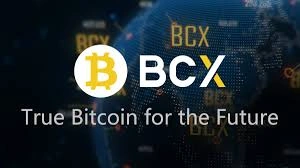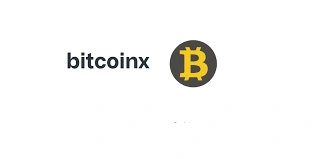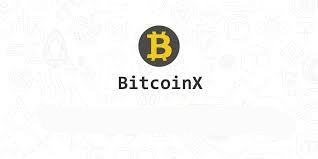BitcoinX (BCX): Enhancing Bitcoin’s Legacy with Advanced Features
Table of Contents

BitcoinX is a Mineable Token. Are you curious about expanding your crypto portfolio with other mineable tokens or alternative coins? At Niftyfinances, you’ll find in-depth information, guides, and the latest updates on various promising crypto projects. Whether you’re a miner or an enthusiast looking for unique opportunities, Niftyfinances is your go-to platform to discover what’s next in decentralized finance!
BitcoinX (BCX) seeks to build upon Bitcoin’s foundation by integrating advanced technologies such as smart contracts, zero-knowledge proofs, and Delegated Proof-of-Stake (DPoS). These enhancements aim to create a more versatile and efficient blockchain, addressing some limitations of the original Bitcoin network.

What is BitcoinX (BCX)?
BitcoinX (BCX) is a cryptocurrency that originated as a fork of Bitcoin at a block height of 498,888 in December 2017. The project aimed to improve upon Bitcoin’s limitations by integrating enhanced scalability, privacy features, and smart contract capabilities while maintaining decentralization. It integrates Delegated Proof of Stake (DPoS) and zero-knowledge proofs for enhanced security and energy efficiency. BCX supports smart contracts, Segregated Witness (SegWit), and Lightning Networks, enabling faster transactions and decentralized applications (dApps).
With a total supply of 210 billion BCX, the coin is actively traded, notably on Gate.io (BCX/USDT pair). As of February 15, 2025, BCX is priced at $0.000165 with a 24-hour volume of $546.91.
BCX focuses on community governance and organic growth, investing in crypto mining partnerships, staking, and peer-to-peer projects. While challenges like market adoption and regulatory changes exist, its innovations position it for long-term potential.
Hybrid Consensus Mechanism
- Unlike Bitcoin’s Proof-of-Work (PoW), BitcoinX uses a combination of PoW and Delegated Proof-of-Stake (DPoS) for faster transactions and lower energy consumption.
Larger Coin Supply
- BCX has a maximum supply of 210 billion coins, significantly more than Bitcoin’s 21 million, making it more accessible for microtransactions.
Enhanced Privacy with Zero-Knowledge Proofs
- BitcoinX integrates zero-knowledge proof technology, allowing transactions to be verified without revealing specific transaction details.
Smart Contract Integration
- Unlike Bitcoin, BCX supports smart contracts, enabling decentralized applications (dApps) on its network.
Sharding for Scalability
- The project implements sharding, a technique that partitions the blockchain into smaller, parallel processing units, improving transaction speeds.
Understanding the BitcoinX Fork
BitcoinX (BCX) emerged as a fork of Bitcoin, introducing key enhancements to improve scalability, security, and functionality. Let’s break down its origins, motivations, and how it differs from Bitcoin.
Genesis of BCX
✔ Fork at Block 498,888 – BitcoinX split from Bitcoin at this block, creating an independent chain.
✔ Snapshot of BTC Holders – Bitcoin holders at the time received BCX at a 1:10 ratio, increasing supply.
✔ New Features Introduced – Unlike a simple copy, BCX incorporated smart contracts, SegWit, and privacy enhancements.
Motivations Behind BCX
🔹 Scalability Challenges in Bitcoin – High transaction fees and slow confirmation times needed a solution.
🔹 Enhanced Smart Contract Capabilities – BCX aimed to introduce programmable transactions beyond Bitcoin’s basic scripting.
🔹 Privacy & Security Focus – Features like Zero-Knowledge Proofs (ZKPs) were integrated for confidential transactions.
🔹 More Inclusive & Fair Distribution – Increasing the total supply aimed to improve accessibility.
Key Differences from Bitcoin
| Feature | Bitcoin (BTC) | BitcoinX (BCX) |
|---|---|---|
| Consensus Mechanism | Proof-of-Work (PoW) | Delegated Proof-of-Stake (DPoS) + PoW |
| Smart Contracts | Limited support | Full smart contract compatibility |
| Privacy Features | Transparent transactions | Zero-Knowledge Proofs (ZKPs) for enhanced privacy |
| Scalability | 1MB block size | Larger blocks + SegWit + Lightning Network |
| Total Supply | 21 million | 210 billion (10,000x more) |
BitcoinX represents an evolution of Bitcoin’s foundation, addressing issues like scalability, privacy, and usability. By implementing DPoS, smart contracts, and advanced security protocols, BCX sets itself apart from BTC while maintaining its core principles.
Key Features
BitcoinX (BCX) distinguishes itself from Bitcoin through several key features designed to enhance functionality, privacy, and efficiency.
Smart Contracts Integration
BitcoinX aims to support smart contracts, enabling programmable and self-executing transactions directly on its blockchain. This functionality allows developers to build decentralized applications (dApps) that can automate complex processes without intermediaries. The activation of smart contract features on the BCX network requires miner voting, ensuring that the community governs the adoption of this capability.
Zero-Knowledge Proofs
To enhance user privacy and security, BitcoinX incorporates zero-knowledge proof (ZKP) technology. ZKPs allow one party to prove to another that a statement is true without revealing any information beyond the validity of the statement itself. In the context of BitcoinX, this means transactions can be verified without disclosing specific details, thereby maintaining confidentiality and bolstering security.
Delegated Proof-of-Stake (DPoS)
BitcoinX employs a Delegated Proof-of-Stake consensus mechanism to improve transaction efficiency and network scalability. In a DPoS system, stakeholders use their coin holdings to vote for a select group of delegates, also known as witnesses or block producers, who are responsible for validating transactions and maintaining the blockchain. This approach enhances network performance and democratizes participation, as stakeholders have a direct influence on the selection of trusted validators.

How BitcoinX (BCX) Works
BitcoinX (BCX) is a fork of Bitcoin designed to improve transaction efficiency, scalability, and security. It integrates advanced blockchain technologies such as Delegated Proof-of-Stake (DPoS), smart contracts, and enhanced privacy mechanisms to offer a more efficient and versatile cryptocurrency network.
Consensus Mechanism: Hybrid PoW & DPoS
Unlike Bitcoin’s traditional Proof-of-Work (PoW) system, BCX combines PoW and Delegated Proof-of-Stake (DPoS) to optimize transaction speed and energy efficiency.
- Proof-of-Work (PoW): Miners use computational power to validate transactions and secure the blockchain.
- Delegated Proof-of-Stake (DPoS): Coin holders can vote for trusted delegates who verify transactions, reducing the need for excessive mining power.
- Benefits: The hybrid system enhances security, decentralization, and scalability while lowering energy consumption.
Smart Contract Integration
- BCX supports smart contracts, unlike Bitcoin.
- Developers can build decentralized applications (dApps) on the BCX network.
- Use Cases: Automated payments, decentralized finance (DeFi), and digital agreements.
Privacy Features: Zero-Knowledge Proofs
- BCX integrates zero-knowledge proof (ZKP) technology.
- ZKP allows transactions to be verified without revealing sensitive data, enhancing privacy and security.
SegWit & Lightning Network for Faster Transactions
- BCX supports Segregated Witness (SegWit) to reduce transaction size, lowering fees, and improve processing speeds.
- The Lightning Network enables off-chain transactions, making microtransactions faster and more cost-efficient.
Unique Address Format & Replay Protection
- BCX uses a unique address format to differentiate itself from Bitcoin.
- Replay protection prevents accidental duplicate transactions across chains.
Supply & Mining Algorithm
- Total Supply: 210 billion BCX (much higher than Bitcoin’s 21 million).
- Mining Algorithm: Uses Blake2b instead of Bitcoin’s SHA-256, making it GPU-friendly.
How BCX Transactions Work
- Users send BCX transactions from one wallet to another.
- Transactions are validated by either miners (PoW) or delegates (DPoS).
- SegWit compresses data, making transactions more efficient.
- If using Lightning Network, transactions can be settled off-chain instantly.
- The transaction is added to the blockchain, completing the process.
BitcoinX (BCX) improves upon Bitcoin by enhancing scalability, privacy, and transaction efficiency. Its hybrid PoW/DPoS model, smart contract support, and privacy-focused features make it a unique alternative in the crypto space. However, low adoption and limited exchange availability remain challenges for its long-term growth.

How to Acquire and Trade BitcoinX (BCX)
Acquiring and trading BitcoinX (BCX) involves selecting appropriate platforms for transactions and ensuring secure storage. Below is a comprehensive guide to assist you:
Supported Exchanges
As of 2025, BitcoinX (BCX) is primarily available for trading on the following centralized exchange:
- Gate.io: Offers the BCX/USDT trading pair. Recent data indicates a 24-hour trading volume of approximately $1,147.83 for this pair.
It’s important to note that BCX has limited exchange support, which may affect liquidity and trading options.
Wallet Options
Storing BCX securely requires selecting a compatible wallet. While specific wallets for BCX are not widely documented, consider the following general options:
- Exchange Wallets: Storing BCX directly on the exchange (e.g., Gate.io) offers convenience for active trading but may expose funds to potential security risks associated with centralized platforms.
- Third-Party Wallets: Research wallets that support BCX, ensuring they offer robust security features such as two-factor authentication and private key control. Always download wallets from official sources to mitigate security risks.
Trading Volume and Market Trends
As of the latest available data, BCX is trading at approximately $0.000165, with a 24-hour trading volume of around $1,147.67. This represents a significant increase of 5,883.30% in trading activity compared to the previous day, indicating a recent surge in market interest.
However, BCX’s market capitalization and circulating supply are not readily available, suggesting limited adoption and liquidity. Potential investors should exercise caution, considering the low trading volumes and the potential challenges in executing large trades without impacting the market.
While BitcoinX (BCX) offers unique features, its limited exchange availability and low liquidity present challenges for acquisition and trading. Prospective users and investors should conduct thorough research, ensure the use of secure storage solutions, and remain aware of the potential risks associated with low-liquidity assets.
Where to Trade BitcoinX:
BCX tokens can be traded on several cryptocurrency exchanges. One of the most active platforms for BCX trading is Gate.io, where the BCX/USDT pair is available. Before engaging in trading, ensure you are using reputable exchanges and consider the associated risks.
BCX Mainnet Launch and Developments
BitcoinX (BCX) has introduced several key features to enhance its network’s functionality and security:
Mainnet Activation
The BCX mainnet launch marked a significant milestone, transitioning from development to a fully operational blockchain network. This activation enabled users to execute transactions, utilize smart contracts, and participate in network governance, establishing BCX as an independent entity within the cryptocurrency ecosystem.
SegWit and Lightning Network Support
To improve transaction efficiency, BCX implemented Segregated Witness (SegWit), a protocol upgrade that separates transaction signatures from data, reducing transaction size and enhancing speed. This modification also lowers fees and paves the way for second-layer solutions like the Lightning Network, which facilitates faster, off-chain transactions, further increasing the network’s scalability and usability.
To address scalability and transaction efficiency, BCX integrated Segregated Witness (SegWit) and supports the Lightning Network:
- SegWit Implementation: SegWit modifies the transaction format, separating signature data to increase the effective block size. This change enhances transaction throughput and reduces fees.
- Lightning Network Support: By facilitating off-chain transactions, the Lightning Network enables faster and more cost-effective micropayments, alleviating the mainnet’s load.
Replay Protection and Unique Address Formats
To safeguard users during potential forks and prevent transaction duplication across chains, BCX incorporated replay protection mechanisms. This ensures that transactions on the BCX network are invalid on other chains, maintaining transaction integrity. Additionally, BCX adopted unique address formats to distinguish its addresses from those of other cryptocurrencies, enhancing security and reducing the risk of errors in transaction processing.
To ensure network security and prevent transaction duplication, BCX has implemented:
- Replay Protection: This feature safeguards users by ensuring that transactions on the BCX network are not inadvertently replicated on the Bitcoin network, maintaining the integrity of both chains.
- Unique Address Formats: BCX utilizes distinct address formats to differentiate its addresses from those of Bitcoin, reducing the risk of cross-chain confusion and enhancing security.
How BitcoinX (BCX) Mining Works
BitcoinX (BCX) mining is a process where miners validate transactions and secure the network by solving complex cryptographic puzzles. BCX mining differs from Bitcoin’s traditional Proof-of-Work (PoW) by incorporating additional consensus mechanisms for efficiency and scalability.
Consensus Mechanism: Hybrid PoW & DPoS
Unlike Bitcoin, which relies solely on Proof-of-Work (PoW), BCX integrates Delegated Proof-of-Stake (DPoS) to improve transaction efficiency. Here’s how both mechanisms work together:
- Proof-of-Work (PoW): Miners use computational power to solve cryptographic puzzles, verifying transactions and adding new blocks to the blockchain.
- Delegated Proof-of-Stake (DPoS): Token holders can vote for delegates who help confirm transactions and maintain the network, reducing energy consumption and increasing scalability.
Mining Algorithm: Blake2b
- BCX uses the Blake2b hashing algorithm, known for its speed and security, unlike Bitcoin’s SHA-256.
- The Blake2b algorithm allows for GPU mining, making it more accessible compared to Bitcoin’s ASIC-dominated mining.
Steps to Mine BCX
Get a Wallet
Before mining, you need a BCX-compatible wallet to store your rewards. You can use an official BCX wallet or exchange-supported wallets.
Choose Mining Hardware
- GPU Mining: BCX is optimized for GPU mining, making it more accessible for individual miners.
- ASIC Mining: Unlike Bitcoin, BCX does not require ASICs, reducing hardware costs.
Install Mining Software
- Use GoMiner or other BCX-compatible mining software.
- Configure it with your wallet address and mining pool details (if applicable).
Join a Mining Pool (Optional)
- Solo mining is possible but less profitable due to high difficulty levels.
- Popular BCX mining pools distribute rewards among participants for more consistent earnings.
Start Mining
- Run the mining software to start validating transactions.
- Earn BCX as a block reward for contributing computing power.
BCX Mining Rewards & Difficulty Adjustment
- Block Rewards: Miners receive BCX coins for every successfully mined block.
- Difficulty Adjustment: The network dynamically adjusts mining difficulty based on hashrate to maintain consistent block times.
Benefits of BCX Mining
✅ Energy-Efficient: PoW is balanced with DPoS to reduce energy consumption compared to Bitcoin.
✅ Lower Barrier to Entry: GPU mining is more accessible than Bitcoin’s ASIC mining.
✅ Faster Transactions: The hybrid model improves scalability and transaction speeds.
BitcoinX mining combines Proof-of-Work and Delegated Proof-of-Stake, optimizing efficiency and scalability. Miners contribute computational power to secure the network while benefiting from GPU-friendly mining and Blake2b’s speed. For higher profitability, joining a mining pool is recommended.
The Future of BitcoinX: Roadmap and Community Engagement
As of February 2025, BitcoinX (BCX) continues to evolve, focusing on technological advancements and community-driven initiatives to enhance its ecosystem.
Upcoming Developments
In September 2024, the BCX team announced plans to launch the BCX Exchange, aiming to provide users with a dedicated platform for trading and investment opportunities within the BCX ecosystem.
- BCX Exchange Launch: Aiming to broaden trading and investment opportunities, the forthcoming BCX Exchange will serve as a dedicated platform for BCX transactions.
- Enhanced Smart Contract Functionality: Building upon its existing smart contract capabilities, BCX plans to introduce more versatile and user-friendly features to attract a wider range of decentralized applications (DApps).
- Privacy Enhancements: To bolster user confidentiality, BCX is exploring advanced cryptographic techniques, such as Zero-Knowledge Proofs (ZKPs), ensuring secure and private transactions.
Community Initiatives
The BCX community plays a pivotal role in the project’s growth. Developers and contributors actively engage through the project’s GitHub repository, collaborating on various aspects of development and maintenance.
Challenges and Opportunities
Despite its advancements, BCX faces challenges such as distinguishing itself in a saturated cryptocurrency market and achieving widespread adoption. However, its commitment to integrating innovative features and fostering community engagement presents significant opportunities for growth and differentiation in the evolving crypto landscape.
BitcoinX is progressing with planned developments like the BCX Exchange and relies heavily on its active community for continuous improvement. While challenges exist, the project’s strategic initiatives position it well for future opportunities.
BitcoinX aims to enhance the Bitcoin ecosystem by integrating advanced features that address existing limitations. As the project progresses, its success will largely depend on community support, continuous development, and adaptability to the dynamic cryptocurrency environment.